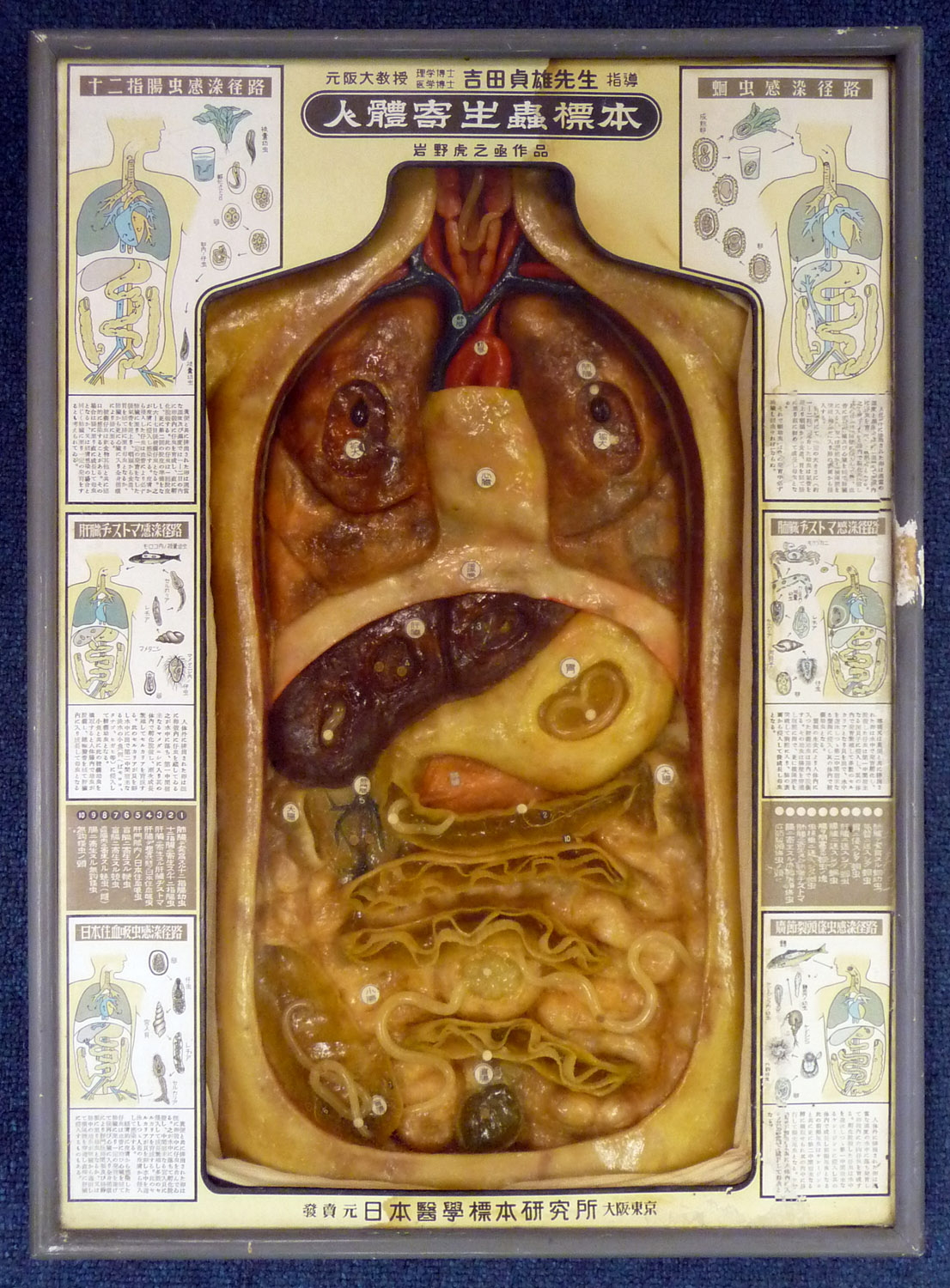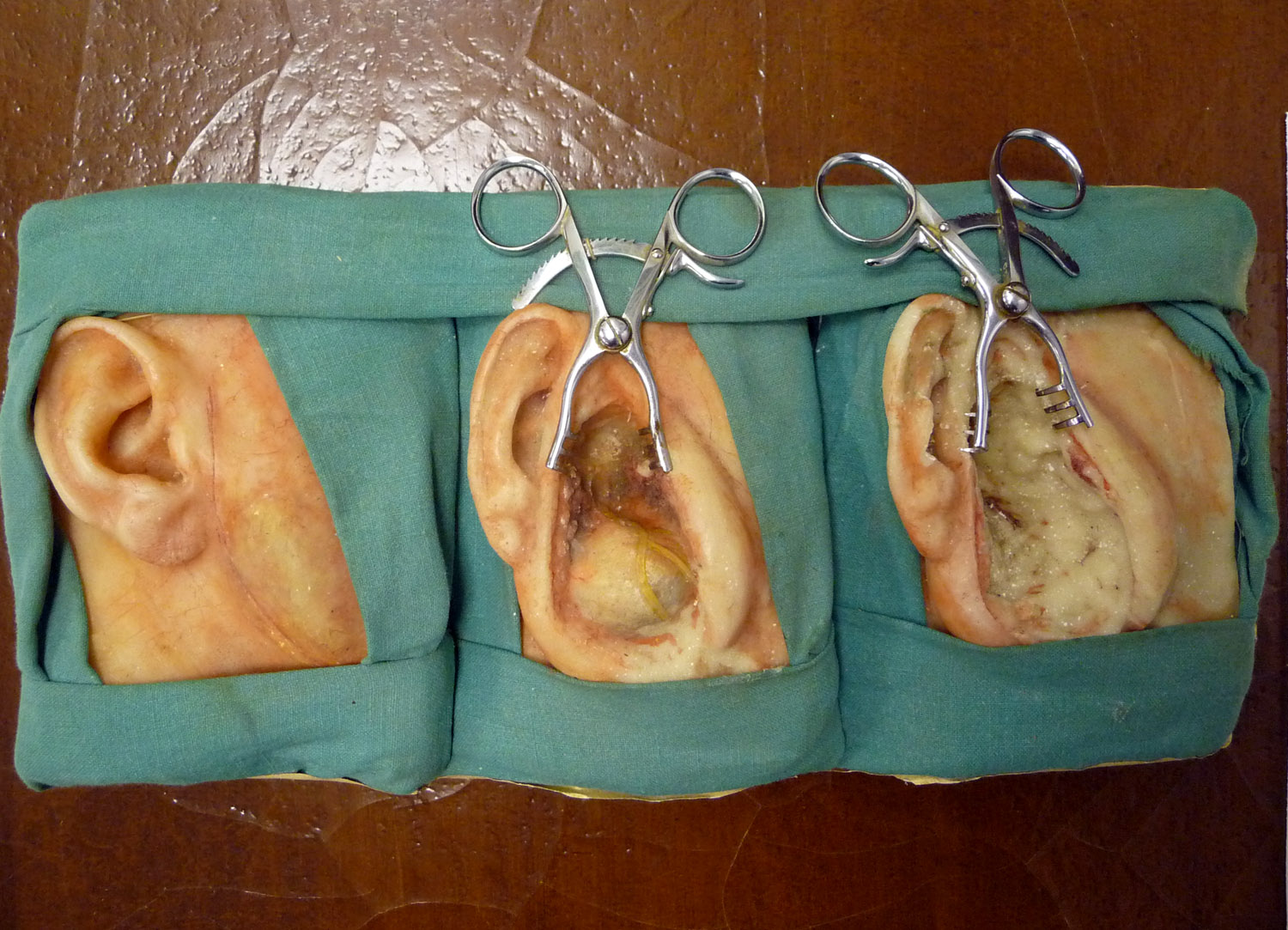by Alethea Drexler
Archives assistant
We have a new toy at the Research Center, and just in time for Hallowe’en!
Archivist Phil Montgomery joined our department this past spring after a stretch with the Woodson Research Center at Rice University. In the 1920’s, the Woodson was home to the Rice Parasite Museum, which Phil says was a fairly popular attraction.
Alas, our recent acquisition appears to be all that remains:

(Click on the picture for a larger version.)
This is a medical “moulage“: A model used in medical education and training. Moulage was developed by an Italian named Gaetano Zummo (or Zumbo; he change the spelling after he moved to France) in the late seventeenth century. More about him, and images of some of his work, can be seen here at the Galleria Roma; scroll down to read the English translation. Moulages are highly realistic painted wax models that depict anatomical features and the effects of disease, and they were invaluable as teaching tools in the days before color photography.
Wax moulages went out of use when color slides became widely available, but another form of moulage that involves simulating wounds in latex and paint on volunteer “patients” or human simulaids is used in first-responder and military training.
This one is in Japanese, and we hope to have it translated soon. It depicts various kinds of parasitic worms, the organs that they infest, and their means of transmission. We are not sure of its age but the rather plain, gray-painted frame suggests it might be from the 1930’s or 1940’s.
Phil says this was always one of his favorite pieces at the Woodson, but that he was the only one who felt that way about it and that they were not very sorry to give it up. We feel it will be right at home here at the Texas Medical Center Library.
The McGovern Research Center has one other moulage, which demonstrates the removal of a tumor just below an ear:

(Click on the picture for a larger version.)
This one came from Manuscript Collection #55 and belonged to Claude Cody, Jr., M.D. After serving as a medical doctor in France during World War I, Cody set up practice in Texas and helped establish the Houston Eye, Ear, and Throat Hospital.
The Hopital Saint-Louis in Paris maintains a museum of about 4,800 moulages; the website can be seen through Google Translate. The Mütter Medical Museum in Philadelphia also has quite a few. (I’ve been to the Mütter; it’s fascinating but not for the squeamish.)